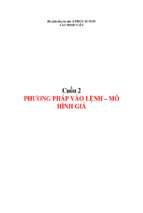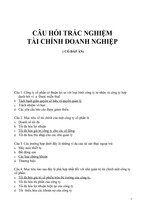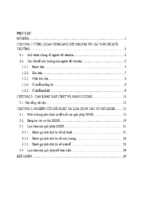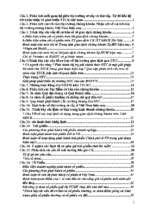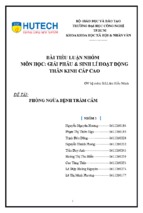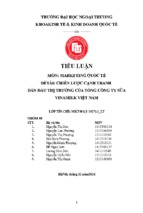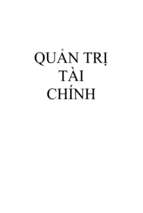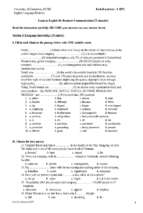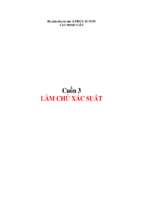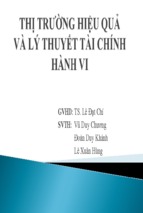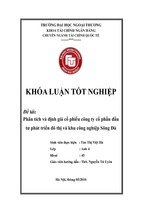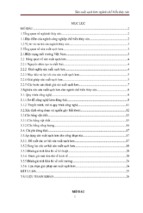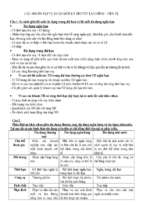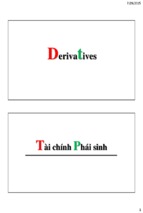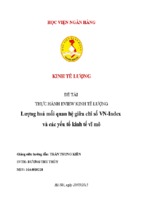Blekinge Institute of Technology
School of Management
Master Thesis
Key Account Management Practices
In Home Appliance Industry of
Pakistan
Author:
Supervisor:
Abdul Razzaq
Dr. Klaus Solberg Soilen
[email protected]
2007- 12
Key Account Management Practices
Abdul Razzaq
Acknowledgement
The profound thanks goes to ALLAH Almighty, most gracious, most merciful, whom alone
we worship and ask for help.
The author would like to thank his supervisor, Dr. Klaus Solberg Soilen, and dean of school
of management, Anders Nilsson, who have been providing valuable guidance and support
during the whole process of thesis work.
The author would also thank to Mr. Arif Shah, zonal manager of Dawlance, who showed
great interest in managing questionnaire and friend Kamran Fazal, for his assistance in
questionnaire formatting.
And last but not least, thanks to my family and friends who have been supportive during my
study.
2
Key Account Management Practices
Abdul Razzaq
Abstract
Key account management (KAM) is considered as an important marketing trend since
last few years. The purpose of this thesis orients to the discussion about key account
management practices from selling company‟s perspectives in home appliance market
of Pakistan.
The study is carried through with four steps: elements of key accounts management,
identification and analysis of key accounts, strategies for key accounts, and operational
level capabilities used in key account management for profitable and long lasting
relationships with key accounts. Basing on the literature review, the basic four elements
for KAM practices are described. This study suggests a framework for KAM practices
in terms of basic elements of KAM regarding its implementation in home appliance
market of Pakistan. It also, explores a relationship between the elements of KAM
framework with practices in the home appliance market of Pakistan.
Four questions are answered in this study. First, four basic elements of KAM are
described from the literature: 1) Identifying 2) analyzing 3) selecting suitable strategies
and 4) developing operational level capabilities for key accounts. Second, dealer‟s sales
volume, showroom size and location, and dealer‟s reputation are the identifying factors
whereas analyzing factors are found regular sales invoices, expected sales share, and
key account‟s ability to solve end user‟s problems. Third, administrative and dominant
strategy is opted in the market and threats are utilized rather than promises within the
relationships. Fourth, quality product with strong customer pull, effective after-salesservices, and KAM manager‟s skills and abilities are regarded as operational
capabilities for profitable and long-lasting relationships with key accounts in home
appliance market of Pakistan.
The findings are based on the empirical data acquired through questionnaire survey
from Dawlance which is a market leader in home appliance market of Pakistan. This
research contributes in two ways. First, it helps Dawlance to focus and prioritize the
factors that are being neglected regarding identification, analysis, selecting suitable
relationship strategies and operational level capabilities used in KAM. Secondly, the
findings will be considered a source of information about Dawlance success for other
selling companies willing to adopt KAM program in home appliance market of
Pakistan.
3
Key Account Management Practices
Abdul Razzaq
Table of Contents
CHAPTER 1: INTRODUCTION ........................................................................................................... 7
1.1 Background of the Research ......................................................................................................... 7
1.1.1 Current Situation of Home Appliance Market in Pakistan .................................................... 7
1.1.2 Introduction to Dawlance ....................................................................................................... 8
1.2 Problems Discussion ..................................................................................................................... 9
1.2.1 Defining the problems ............................................................................................................ 9
1.2.2 Research questions ............................................................................................................... 10
1.3 Aims and Objectives ................................................................................................................... 11
1.4 Research Scope and Limitation................................................................................................... 11
1.5 Thesis Structure .......................................................................................................................... 12
CHAPTER 2: METHODOLOGY ........................................................................................................ 13
2.1 Data Collection ....................................................................................................................... 13
2.1.1 Primary data ......................................................................................................................... 13
2.1.2 Secondary data ..................................................................................................................... 14
2.2 Questionnaire .............................................................................................................................. 15
2.2.1 Design of questionnaire ....................................................................................................... 15
2.3 Literature Review........................................................................................................................ 16
2.3.1 Introduction of theoretical sources ....................................................................................... 16
2.4 Limitations .................................................................................................................................. 17
2.4.1 Limitations of the questionnaire .......................................................................................... 17
2.4.2 Applicability of the theories ................................................................................................. 17
CHAPTER 3: LITERATURE REVIEW .............................................................................................. 18
3.1 ELEMENTS OF KAM ............................................................................................................... 18
3.1.1 Key Account Management................................................................................................... 18
3.1.2 Elements of Key Account Management .............................................................................. 23
3.2 IDENTIFICATION & ANALYSIS OF KEY ACCOUNTS ...................................................... 24
3.2.1 Identifying factors ................................................................................................................ 24
3.3.1 Analyzing factors ................................................................................................................. 26
3.4 STRATEGIES FOR KEY ACCOUNTS .................................................................................... 27
3.5 OPERATIONAL CAPABILITIES USED IN KAM .................................................................. 29
4
Key Account Management Practices
Abdul Razzaq
3.6 FRAMEWORK FOR KAM PRACTICES ................................................................................. 32
CHAPTER 4: ANALYSIS AND RESULTS........................................................................................ 33
4.1 Questionnaire .............................................................................................................................. 33
4.2 Analysis and Results ................................................................................................................... 33
4.2.1 Identifying factors ................................................................................................................ 33
4.2.2 Analyzing factors ................................................................................................................. 34
4.2.3 Strategies for key accounts .................................................................................................. 35
4.2.4 Operational capabilities used in KAM ................................................................................. 36
4.3 Comments and Discussions ........................................................................................................ 37
CHAPTER 5: CONCLUSION AND RECOMMENDATION ............................................................. 39
5.1 Conclusions ................................................................................................................................. 39
5.2 Recommendations ....................................................................................................................... 41
5.2.1 Identification and analysis of key accounts ......................................................................... 41
5.2.2 Relationship strategies ......................................................................................................... 41
5.2.3 Operational capabilities........................................................................................................ 41
5.3 Further Study .............................................................................................................................. 42
CHAPTER 6 - REFRENCES ............................................................................................................... 43
APPENDIX I- COVER LETTER ......................................................................................................... 46
APPENDIX II- QUESTIONNAIRE ..................................................................................................... 47
APPENDIX III - RESULTS OF QUESTIONNAIRE .......................................................................... 56
5
Key Account Management Practices
Abdul Razzaq
List of Figures & Tables
Figure 2.1 Primary Data Sources-------------------------------------------------------------------- 13
Figure 2.2 Secondary Data Sources----------------------------------------------------------------- 14
Figure 3.1 Characteristics of key accounts--------------------------------------------------------- 19
Figure 3.2 Key Accounts Relational Development Model--------------------------------------- 22
Figure 3.3 Elements of KAM------------------------------------------------------------------------- 24
Figure 3.4 Profitability of Accounts----------------------------------------------------------------- 25
Figure 3.5 Account size and Profitability----------------------------------------------------------- 26
Figure 3.6 Relationship management mode matrix------------------------------------------------ 28
Figure 3.7 Relationship Mapping Model------------------------------------------------------------ 29
Figure 3.8 Frameworks for KAM Practices--------------------------------------------------------- 32
Figure 4.1 Key account identifying factors---------------------------------------------------------- 34
Figure 4.2 Key account analyzing factors----------------------------------------------------------- 34
Figure 4.3 Key account relationship strategies------------------------------------------------------35
Figure 4.4 Operational level capabilities used in KAM--------------------------------------------36
Table 3.1 Partnering benefits for selling and buying companies -------------------------------------- 21
Table 4.1 Percentage questionnaire received-------------------------------------------------------- 33
Abbreviations
KAM: Key Account Management
NAM: National Account Management
SAM: Strategic Account Management
CSC: Customer Service Centre
6
Key Account Management Practices
Abdul Razzaq
CHAPTER 1: INTRODUCTION
1.1 Background of the Research
1.1.1 Current Situation of Home Appliance Market in Pakistan
According to the report by Daily Times (www.dailytimes.com.pk), the business environment
is highly favorable for investment in home appliance industry of Pakistan. Therefore home
appliance industry is getting attention of foreign investors as well. China‟s home appliance
giant Haier has established the industrial zone in Punjab, Pakistan which is its second
overseas manufacturing base after United States. This is joint venture in home appliance
industry between Government of China and the private sector of Pakistan. It is very large and
growing business sector in Pakistan.
In Pakistani home appliance market, there are two types of companies involved in appliance
business those are local and imported manufacturers and marketers. They are engaged in both
aspects of marketing that is business-to-business marketing (B2B) and business-to-consumer
(B2C) marketing. In business-to-business, the manufacturers sell their products to retailers
those are known as dealers. Dealers are responsible for retail selling to the end users. A few
of the companies also have their own retail outlets also. Since last few years the
manufacturers are facing a competitive and challenging situation in business-to-business
relationships due to following reasons.
There are three factors to take into account for home appliance industry in Pakistan. Firstly,
the challenging situation has been created by dealers whose profits have been reduced due to
certain policies adopted by manufacturers in the last few years. So they are looking forward
to new manufacturers entering in the industry. More profits and better services are also being
included in their demands. Secondly, the new entrants in the manufacturing industry
including manufacturers and importers, either they are local or foreign investors have
challenged the domination of existing manufacturers and importers. Thirdly, due to the
expansion in market size horizontally and vertically, competitive situation has been increased
among manufacturers within the industry.
Fluctuating customer requirements and competitive forces are putting more pressure on
marketers. They are demanding superior marketing strategy and tactical execution (Anni, I.
2002). According to Peter Cheverton, the relationships between B2B suppliers and customers
have become a vital source of competitive advantage. Many companies are moving from
traditional marketing towards relational-oriented marketing (Cheverton, P. 2004). Suppliers
have acknowledged that improved customer- supplier relationships increase key accounts
customer retention and loyalty more successfully (Abratt, R. & Kelly, P.M. 2002).
7
Key Account Management Practices
Abdul Razzaq
In home appliance market, the marketers are aware about the needs of relationship building
with key customers. Most of them are applying few factors of key account management
practices unconsciously but not KAM program as a whole. Among all of them, Dawlance is
the pioneer that applying key account management approach with almost same terminology
as described in literature. So, Dawlance KAM practices are studied as undergoing key
account management practices in Pakistani home appliance market.
1.1.2 Introduction to Dawlance
The company
At present the main actors are Dawlance, PEL, Waves, Haier, and LG. The first three are
local companies while rest two belongs to China and Korea respectively. Dawlance is a brand
name of group of companies which was established in 1980 with a name United Refrigeration
Industries Limited. Initially they started their business with refrigerator manufacturing and
later on increased their product line. Its products line includes refrigerator, deep freezer,
washing machine, microwave oven and air conditioners. Being a brand leader Dawlance is
committed to enhance the living standard of people through manufacturing reliable home
appliance products and marketing them at affordable prices in Pakistan (Abratt, R. & Kelly,
P.M. 2002). All products are made for middle, upper middle and upper class.
Market Positioning
Dawlance is the largest company in Pakistan engaged in appliance business. Present Market
Share of Dawlance product is: refrigerators 65%, Washing Machines 35%, Microwave Oven
40%, Chest Freezers 45%, and Air Conditioners 15% (Anni, I. 2002).
They have around 800 dealers in the country that is 80% of the total national dealers. There
are 16 operational centers (Branches) to operate this large dealer network all over the
country. They possess very effective logistics system with 16 big warehouses all over the
country for the prompt execution of sales invoices. Hence Dawlance products are available
almost in all the cities and small towns as well. As regards to the after sales services, the
service centers are present where company dealers exist. There are 20 company‟s own
service centers and 40 contract workshops in remote areas to provide timely and effective
customer service.
Key Account Management Practices
In Pakistani home appliance market most of the companies are engaged in business-tobusiness marketing. As stated above Dawlance has large dealer network all over the country.
They are training and developing selling teams. The company is focusing high volume
dealers paying special attention regarding their profits maximization, problem solving, and
developing relationships. The “high volume term” was used so far except key account. Since
last year the company has introduced KAM program named “key account management
scheme” in the market place. All other actors in home appliance market are still lagging
behind and using traditional sales approaches.
8
Key Account Management Practices
Abdul Razzaq
1.2 Problem Discussion
1.2.1 Defining the problem
To survive in the dynamic marketplaces, companies need to develop the strategies that can
stay alive in the changing marketplace. They must develop relationships with suppliers and
distributors, investors, customers and other key companies and people in the market. Recent
research has moved attention to certain moderating factors which favor the performance of
specific relationship marketing approaches, as nearly every company uses some kind of
relationship marketing, in order to adapt to its business environment (Wengler, S., Ehret, M.
& Saab S. 2006). This shift towards relationship marketing brought with it a new
management philosophy, namely key account management (KAM). KAM is one of the more
significant marketing trends of the past several decades (Conlon, G.L., Napolitano, L. &
Pusateri, M. 1997).
KAM is an approach adopted by selling companies aimed at building a portfolio of loyal key
accounts by offering them, on a continuous basis, a product/ service package tailored to their
needs (McDonald, M., Millman, T. & Rogers, B. 1997). According to Maister (1999), KAM
is giving special attention to high quality clients that meet pre-established criteria. Kempeners
and Hart (1999) define KAM as process of building and maintaining relationships over an
extended period, which cuts across multiple levels, functions, and operating units in both the
selling organizations and in carefully selected customers that contribute to the company‟s
objectives now or in the future.
According to Cespedes (1989), the KAM process involves identifying buying firm for
account management using predefined criteria, understanding of the buying process of such
accounts, developing buyer seller relationships and sales coordination. The process of key
account management consists of four basic elements (Ojasalo, J. 2001). The identification of
the key accounts, analysis of the key accounts, selecting suitable strategies for the key
accounts, and developing operational level capabilities to build, grow, and maintain profitable
and long- lasting relationships with them. Actually, key account management concerned with
initiatives taken by a selling firm towards maintaining mutually beneficial long term
relationship with few of its selected buyers (Abhishek, S., Shashidhar R., Nagabhushan R.,
Prashant, M. & Gururaj, K. (2005).
The main focus of this research study aims to highlight KAM initiatives and practices, from
managerial perspective among home appliance industry in Pakistan. How manufacturers can
develop their business-to-business (B2B) relationships with their key accounts (dealers) more
effectively, how they can retain them for long period time and how they can get the
competitive advantage in future. The field is interesting to study because of an integrated
framework is not available for this business sector, based on the research work carried out in
different areas of KAM.
The study focuses on the process and implementation of KAM program from managerial
perspectives. The undergoing key account management (KAM) practices in the market
adopted by Dawlance will be analyzed and then improvements will be presented in KAM
9
Key Account Management Practices
Abdul Razzaq
program from the managerial point-of-view. So, the main objective is to answer this question:
How key account management program can be implemented in Pakistani home appliance
industry? This will be answered through the following questions.
1.2.2 Research questions
This study will be conducted with the following research questions.
1. What are the elements of a successful key account management program?
As key account management is an approach adopted by the selling firm to maintain its
relationships for long term with some selected buyers. So the selling company has to develop
some criteria for KAM practices. This is a theoretical portion of the study and it is tried to
find out the elements for successful practices of KAM.
2. How key accounts are identified and analyzed by suppliers in home appliance market of
Pakistan?
In this section, the two aspects of KAM practices in home appliance market of Pakistan are
addressed. Firstly, the selection criteria of key accounts by selling company will be studied.
For example account‟s sales volume, financial strength, strategic resources, age of
relationships and compatibility etc. Secondly, the basic characteristics of selected key
accounts like key accounts buying behavior, buying frequency, complaints handling,
switching cost and information exchange will be analyzed.
3. What kind of KAM strategies are used for key accounts in Pakistan home appliance
market?
This portion is third step in KAM practices which highlights the relationship strategies
adopted by selling company. To find out the comprehensive answer of this question both
formal and informal strategies will be analyzed in home appliance market of Pakistan. Formal
strategies include collaboration, negotiation, administration and accommodation etc. whereas
informal strategies may be hidden discounts, credit days, credit limits, gifting with purchase,
stock availability and dining occasionally.
4. What are the operational level capabilities used in KAM for profitable and long-lasting
relationships with the key accounts in home appliance market of Pakistan?
The forth step in KAM practices is based on the study of operational capabilities being used
in Pakistani home appliance market. This portion also includes the implementation and
control functions. Here, both formal capabilities as products level, selection of key account
manager, interaction with key accounts and organizational structure etc, and informal
capabilities as service level, problem resolution, courtesy calls and profits assurance
capabilities will be analyzed.
10
Key Account Management Practices
Abdul Razzaq
1.3 Aims and Objectives
As home appliance industry is potential and growing business sector in Pakistan. Selling
companies are using different marketing strategies to get competitive advantage in the
marketplace. Marketing strategies include like product development, price reduction,
effective advertisement campaigns, and relations building with channels networks.
The aim of this dissertation is to analyze the undergoing key account management practices
in the market and propose a framework from managerial point-of-view. This is also, a study
about the implementation of key account management (KAM) program.
Secondly, to provide the solution of the problem in business-to-business context in home
appliance market of Pakistan that management is facing regarding relationships with dealers
(channels) in the changing market situation. The above discussed aims will be explored
through the following points.
To understand the elements of successful key account management.
To analyze the process of key account selection & analysis in home appliance market
of Pakistan.
To analyze the relationship strategies being used for key accounts in Pakistani home
appliance market.
To analyze the operational capabilities for profitable and long-lasting relationships
with customers in home appliance market.
To provide some reasonable suggestions and useful recommendations.
Implication of the results
The study will help us understand about the KAM practices how these are helpful in
acquiring and retaining key accounts and what kind of operational capabilities are required in
the home appliance market of Pakistan. Secondly, the findings will be considered a source of
information in formulating future strategies for Dawlance and other appliance manufacturers
and marketers in Pakistani home appliance industry.
As discussed earlier that Dawlance is market leader and other selling companies are market
challenger, follower or niche player. So, they follow Dawlance directly or indirectly in
product development, sales policies, operations, and after-sales-services. Hence, the findings
will be interesting from other selling companies‟ point of view.
1.4 Research Scope and Limitation
According to author, there are three kinds of limitations involved in this study; sample
selection, fitness of theory and face to face interview.
Sample Selection
Firstly, the sample selected consists of responses from executives of Dawlance only. The
questionnaire was floated in six sales branches of Lahore, Gujranwala, Sialkot, Gujrat,
Peshawar and Karachi. The respondents from other electronics companies could not be
11
Key Account Management Practices
Abdul Razzaq
included in the sample. They could not be accessed due to lack of time and lack of sources
like contacts & communications. Although Dawlance is a Market leader and pioneer in
implementing key account management in home appliance market but there may be
difference in strategies and capabilities among Dawlance and others. So the results derived
here may effect.
Variable Selection
As Pakistani home appliance market is not so developed from the research point of view and
printed data is not available, so the variables are choose keeping in mind these limitations.
Fitness of Theory
Secondly, the theory provides the basis for empirical analysis of ongoing KAM practices in
home appliance market of Pakistan. Author thinks that theoretical work done so far in the
field of key account management is derived from developed markets like European and
American markets. Whereas Pakistani home appliance market may differ in size, pace,
culture and values. So the cultural background, customer psyche, operational capabilities like
managerial skills, company structure and KAM team may consequence in discrepancies in
final results.
Face-to-Face Interviews
Thirdly, face-to-face interviews with higher management could not be conducted as author
resides in Sweden during writing this dissertation and have to rely on questionnaire for
empirical data. Hence all the results derived in this study about key account management in
home appliance market of Pakistan are based on the questionnaire.
1.5 Thesis Structure
The thesis consists of six chapters. Chapter 1 discusses about the problem and its background
in Pakistani home appliance market. In chapter 2, the methodology adopted including data
sources and collection ways is discussed. In chapter 3, the theoretical background is
developed. In chapter 4, the empirical data collected through questionnaire survey is analyzed
and results are concluded on the basis of questionnaire survey. Author does not feel the need
to establish a separate chapter for data presentation (as suggested by the opponent) because
necessary data tables are already placed in Appendix III. So, analysis and results are
discussed in the text. Conclusions are drawn and there are suggested necessary
recommendations in chapter 5, whereas chapter 6 contains the references.
12
Key Account Management Practices
Abdul Razzaq
CHAPTER 2: METHODOLOGY
2.1 Data Collection
There are two types of sources available for data collection regarding research purpose:
primary and secondary data. In this research study, both primary and secondary sources are
utilized. Secondary data is obtained from the books, journal articles and internet while
primary source depends on the questionnaire survey. The author depends on both the sources
for theoretical and empirical data. As there is very rare published material available about
home appliance market in Pakistan, so author have to depend on questionnaire survey results
for empirical data.
2.1.1 Primary data
As discussed by Yanni & Shishhang (2005), primary data is the “data collected through
original research pertaining to the particular research question asked.” According to Kotler
(Kotler, P.1996, Marketing management: analysis, planning, implementation and control,
9ed.), “the data needed by researcher might not exist, or the existing data might be dated,
inaccurate, incomplete, or unreliable. In this case the researcher will have to collect primary
data at greater cost and longer delay but probably with more relevance and accuracy.” The
process of Primary data collection may involve some disadvantages or problems (Ghauri, P.
& Gronhaug, K. 2005); long time & cost required and difficult to get access to the
respondents, careful application of tools & methods for analysis, and quality of information
may effect due to ability of respondents.
There are several choices for primary data collection i.e. survey (questionnaire), interview,
observations and experiments. The primary data here is collected through a comprehensive
questionnaire in this research. These choices are shown in figure 2.1
Figure 2.1 Primary Data Sources
Source: Ghauri, P. & Gronhaug, K. (2005). “Research Methods in business Studies”, 3ed.
Prentice Hall.
13
Key Account Management Practices
Abdul Razzaq
2.1.2 Secondary data
Secondary data are useful not only to find information to solve research problem but also
helps to better understand and explain the research problem. It includes books, journal
articles, online data sources of firms, government, semi-government organizations (Ghauri, P.
& Gronhaug, K. 2005). Using secondary data clearly have some advantages as saving time
and money, high quality and reliability, and helpful in segmentation. From Ghauri &
Gronhaug, “do not bypass secondary data. Begin with secondary data, and only when the
secondary are exhausted or show diminishing returns, proceed to primary data.” Secondary
data, in this research will be obtained from BTH library including books and electronic
sources available. Further, secondary data can be categorized into internal and external data
(Proctor, T. 2005).
Internal Data
Internal data are data that come from an organization‟s daily operations about sales,
advertising, inventory record, salesperson‟s feedback etc.
External Data
External data belongs to the outside sources of an organization. External data are found in
numerous forms.
Several sources for internal and external data collection are presented in the figure 2.2
Secondary Data
External sources
Internal sources
-Invoices
-Reports from different
dept
-Warranties
-Complaints
-Brochures and
catalogue
Published
-Books & articles
-General statistics
-Annual accounts
-Research reports
-Industry statistics
Commercial
-Panel research
-Scanner research
-monitors
-In-shape research
& report
Figure 2.2 Secondary Data Sources
Source: Ghauri, P. & Gronhaug, K. (2005). “Research Methods in business Studies”, 3ed.
Prentice Hall.
14
Key Account Management Practices
Abdul Razzaq
2.2 Questionnaire
2.2.1 Design of questionnaire
Questionnaire is designed keeping in mind the research questions of this study. Questionnaire
is divided into three sections according to the research questions. Each section is based on the
separate research question. Both closed and open-ended questions are included in the
questionnaire. In closed-ended questions Likert-scale method (Proctor, T. 2005) is used for
response. Seven different scaling options are included in Likert-scale method to minimize the
response bias. The scales: strongly agree, agree, slightly agree, neither agree nor disagree,
slightly disagree, disagree and strongly disagree are assigned ranks from 1- 7 respectively. In
each section, opened-ended questions are also included to get respondent‟s own reaction or
point of view about that particular topic. It‟s descriptive type where respondent can describe
or add his experiences and observations.
It is tried to be precise in wording of questions to achieve maximum validity of information
through asking questions. The terminology used in questionnaire depicts the home appliance
market of Pakistan. The word dealer is used in questionnaire along with key account.
Section I is based on question 2 of this study. The section consists of two main and
some sub questions which are formulated to explore the process of identification and
analysis of key accounts in home appliance market of Pakistan.
Section II consists of relationship strategies used for key accounts in home appliance
market of Pakistan. Here, questions are formulated to explore both formal and
informal strategies used in Home Appliance Market of Pakistan.
In section III, it is tried to elaborate question no.4; the operational level capabilities
used in KAM for profitable and long-lasting relationships with the key accounts in
home appliance market of Pakistan. It is also tried to find out the formal and informal
capabilities in this section.
One of the objectives of this research is to study the KAM practices in home appliance
industry of Pakistan. For this purpose, the empirical data is acquired from “Dawlance” who is
market leader engaged in manufacturing and marketing of home appliance products in
Pakistan. Dawlance possess a large number of dealers‟ network who plays the pivotal role in
company sales. Dawlance occupies 65% market share in electronics industry which is result
of good buyer-seller relationships. They have also, developed a very good customer-servicecentre (CSC) for after-sales services. They serve with 20 CSC and 40 contract workshops in
all major cities. So, keeping in view the increased role of Dawlance in electronics market due
to its organizational setup, dealer network, market share, after-sales services and companydealer relationships, it is decided to have a sample from Dawlance for empirical data and
further implications regarding electronics market of Pakistan.
Sample Selection principle
At present Dawlance holds 16 sales branches in major cities engaged in managing sales and
marketing activities. They are doing business with 600 dealers in the country. The sample is
selected from six branches from three provinces of Pakistan including four in Punjab
province, one NWFP and one in Sindh province. The branches lie in thickly populated
15
Key Account Management Practices
Abdul Razzaq
districts of the provinces. The four branches Lahore, Gujranwala, Gujrat and Sialkot from
Punjab Province possess an effective dealer network and contribute well in company sales.
Here dealers come both from urban and rural areas equally, whereas Karachi and Peshawar
are provincial headquarters of Sindh and NWFP provinces respectively. It gives the precise
picture of electronics market because Pakistani society consists of both rural and urban
districts. So, the chosen sample is non-probability because it is market research and no
scientific research involved here (Proctor, T. 2005).
Size of the Sample
The questionnaire is distributed to 30 company executives in these six branches. The
executives have the responsibility of dealer identification, analysis and operational activities
involved in dealer management process.
Methods for submission of questionnaire
The questionnaire is distributed to the respondents through the way of e-mail, assisted with
telephone call contact with company managers. The author has continuous telephonic
contacts and communication with them for accurate and efficient results as well as to run it
efficiently for reclaiming.
2.3 Literature Review
2.3.1 Introduction of theoretical sources
As this research study deals with the key accounts management practices, so the author
mainly select and use for reference the theories on elements of key account management,
identification of key accounts, analysis of key accounts, relationship strategies used for key
accounts and operational level capabilities used in KAM for profitable and long lasting
relationships with key accounts. The first portion, „elements of key account management‟ is
rather theoretical and main elements are elaborated from the past research done in this field.
In the second portion, the theories are used that can provide basis for analysis in the process
of identification of key accounts, analysis of key accounts, KAM strategies being used for
key accounts and operational level capabilities that organizations are using in KAM to retain
their key accounts.
Other sources
Key accounts management (KAM) is a combination of sales management and relationship
marketing theories. So, for the purpose of analysis these two basic theories are also touched
in this research, such as selling skills and techniques for the professions by Tasso Kim
(Tasso, K. 2003), marketing management: analysis, planning, implementation and control by
Philip Kotler (Kotler, P. 1996), broadening and specifying relationship marketing by
Gummesson (Gummesson, E. 1999), and from marketing mix to relationship marketing by
Grönroos (Grönroos, C. 1994).
16
Key Account Management Practices
Abdul Razzaq
2.4 Limitations
2.4.1 Limitations of the questionnaire
The questionnaire was sent to respondents from six branches of home appliances market in
Pakistan through e-mail. It was not feasible for the author to conduct the interviews
personally. The main points in the questionnaire are discussed with zonal and branch
managers telephonically. All respondents can‟t maintain same level of accuracy in answering
the questions due to lack of time and interest. It may create little discrepancy to some extent
in formulating the conclusions. As the sample is non-probability, it is not distributed to
executives all over the country. Secondly, the empirical data consists of Dawlance and other
selling companies are not included in the survey.
2.4.2 Applicability of the theories
In home appliance market of Pakistan, the companies engaged in business of electronics
products either local manufacturers, importers or foreign investors are applying the concept
of key account management. At present they are using the terms, volume dealer, big dealers,
potential dealers and loyal dealers rather than key accounts for their potential buyers.
Dawlance is the only selling company that is using the terminology of key account. The
theories described in literature for key accounts identification, their analysis, KAM strategies
used for key accounts and operational capabilities used are applied in home appliance market
of Pakistan. As the theories are developed in European and other developed markets and
Pakistan‟s market is different in nature, so, it is realized little discrepancies in applications
due to cultural environment, economic system, professional skills, brand monopolies, market
competition and supply chain.
17
Key Account Management Practices
Abdul Razzaq
CHAPTER 3: LITERATURE REVIEW
3.1 ELEMENTS OF KAM
3.1.1 Key Account Management
What is a Key account?
Important and potential customers are indicated with different words having different
meanings. There are two terms used nowadays to represent it, i.e. Key Account and Global
Account (Derrick, P.G. & Aimé, H. 2002). Some other terms being used in literature by the
writers in different times are National and Major Account (McDonald, M., Millman, T. &
Rogers, B. 1997). Since last two decades, Global Key Account or Strategic Account terms are
being used more frequently to represent National Account which is an evolutionary form of
Important Customer and Major Account terminologies. So, “there does not seem to be any
real difference between KAM, NAM and SAM” (Ojasalo, J. 2001). For the purpose of this
study a key account may be defined as
“A Key account is a customer in a business-to-business market identified by a selling
company as of strategic importance (Millman, T. & Wilson, K. 1995)”.
There are two types of adjectives (Derrick, P.G. & Aimé, H. 2002) found before the term
“Account”. Firstly, Local, National, International, Multinational, Worldwide and Global
stand for size of customer and its geographical spread. Secondly, the terms Large, Big,
Major, Key and strategic shows the importance of the customer in marketplace according to
the supplier‟s point of view. On the other hand, the adjectives mentioned later also indicate
the customer‟s acceptance in the industry and his competitive position. Moreover, it shows
the expected profitability resulting from the supplier‟s special consideration during his
customer segmentation (Derrick, P.G. & Aimé, H. 2002).
During a study (Millman, T. & Wilson, K. 1996), the managers‟ views shed light on the
concept of key accounts as,
Customers that represent large business volume
Customers that fit the 80/20 rule
Any customer with whom we have a close long term relationship
Any customer where an opportunity or a threat (from the competition) exists becomes
a key account, and so on.
The logic behind the term Key Account is the global economic perspective (Montgomery et
al. 1998) and growing complex aspects in customer management. Due to using the name of
Key Account (Millman, T. & Wilson, K. 1996), a special consideration to major, strategic or
potential customers is increased and a particular marketing approach is adopted. The
characteristics (Derrick, P.G. & Aimé, H. 2002) of key accounts according to their
importance, geography and strategy driven are shown in figure 3.1
18
Key Account Management Practices
Abdul Razzaq
Geography
Global
International
Local
Importance
Sales Driven
Relationship Driven
Supplier
Customer
Strategy Driven
Approach
Figure 3.1 Characteristics of key accounts
Source: Derrick-Philippe, G. & Aimé, H. (2002).
Key account management
There are two schools of thought (Derrick, P.G. & Aimé, H. 2002) about the concept of key
account management: Key account selling and Key account management. The first is sales
driven whereas the other is strategy driven approach. The key account selling approach is
operational and focuses on short-term sales rather than strategic objectives like entry barriers
(Derrick, P.G. & Aimé, H. 2002). The key account management approach is based on
developing long term relationships with key accounts through better services and providing
customer specific solutions. This approach emphasizes on developing strategic alliances with
key customers to generate competitive advantage in the changing market environment.
Apparently the two approaches key account selling and key account management looks
different to each other; however they are used interchangeably (Hannah, G. 1984). Actually
key account selling objective is to increase short term sales whereas key account management
focuses on developing competitive advantage through long term relationships. Millman has
comprehensively defined key account management as
“Key account management is an approach adopted by selling companies aimed at building a
portfolio of loyal Key accounts by offering them, on a continuing basis, a product/service
package tailored to their individual needs. To co-ordinate day-to-day interaction under the
19
Key Account Management Practices
Abdul Razzaq
umbrella of a long-term relationship, selling companies typically form dedicated teams
headed up by a Key account manager. This special treatment has significant implications for
organizational structure, communications and managing expectations” (Millman, T. &
Wilson, K. 1995).
Key account management is a marketing management concept which is based on relationship
marketing literature and personal selling/sales management literature (Wengler, S., Ehret, M.
& Saab S. 2006). Both research streams relationship marketing and sales management
contribute in developing key account management literature. Relationship marketing
concerns about the whole business management and relationship management whereas
personal selling/sales management focuses on the sales activities (Derrick, P.G. & Aimé, H.
2002).
Reasons and Benefits for implementation of key Account Management
In his study, (Wengler, S., Ehret, M. & Saab S. 2006) has explored the following reasons that
cause to implement the key account management.
Minimizing market risk
Differentiation
Internationalization of markets
Improving efficiency of internal decision making
Customer induced relationship intensity
Increasing customer requirements
Customer segmentation
Hope to improve internal coordination
Increasing internationalization of customers
Increase of customer orientation of supplier
In short, the influencing factors that cause to motivate the companies adopting key account
management to gain competitive advantage in the changing marketplace can be summarized
in three factors. The factors are „intensity of competition‟, „intensity of coordination‟, and
„the purpose of research and development of products with their important customers‟
(Wengler, S., Ehret, M. & Saab S. 2006).
The strategic plans developed focusing individual customer give better understanding and
deep insights to customer needs and requirements. Thus, selling companies try to offer
tailored products and services to their key customers. On the other hand, the implementation
of key account management enhances the involment of buying customer that is beneficial for
selling company. Customer involment leads him towards commitment with supplier plan, risk
reduction and efficient resources application. The benefits of KAM implementation are
included (Ryals, L. & Rogers, B. 2007).
Better customer understanding
New thinking
Customer involvement and buy-in
Sharing of information
20

